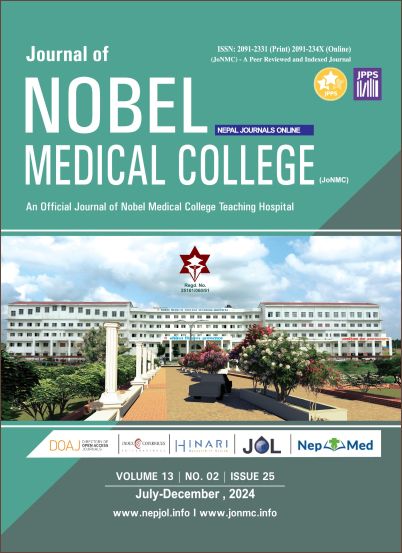Evaluation of Performance of Biochemistry Analytes Using Six Sigma Metrics in Clinical Laboratory of Nobel Medical College Teaching Hospital
DOI:
https://doi.org/10.3126/jonmc.v13i2.74410Keywords:
Biochemistry, Sigma Metrics, Quality controlAbstract
Background: Six sigma metrics is a tool used in clinical laboratories that helps to quantitate the approximate number of analytical errors and provide an objective assessment of quality. This study aims to evaluate the performance of various biochemistry analytes using six-sigma metrics to identify areas for improvement and enhance overall quality control.
Materials and Methods: This study is a cross sectional study conducted at the Clinical Chemistry Laboratory of Naya Lab, Nobel Medical College Teaching Hospital, Biratnagar that evaluated internal quality control and external quality control data of 18 routine biochemistry tests for a period of four months to calculate sigma value. The analysis was performed using a Beckmann Coulter automated biochemistry analyzer. Quality goal index values were calculated to find the reason behind lower sigma values <3.
Results: Out of the 18 analytes, four for level 1 quality control and six for level 2 quality control were found to have a sigma value of more than 6. Similarly, five analytes, namely, urea, creatinine, calcium, potassium, and total protein, were found to have a sigma value of less than 3. Most of the analytes fell between 3 and 6. The quality goal index of the analytes for whose sigma value was less than 3, found that imprecision was the major problem.
Conclusion: This study highlighted the critical role of six sigma metrics in enhancing the quality control processes within clinical laboratories. We identified significant variability in the sigma values of 18 analytes, with some analytes demonstrating excellent performance while others revealed areas needing improvement.
Downloads
Downloads
Published
How to Cite
Issue
Section
License
Copyright (c) 2024 The Author(s)

This work is licensed under a Creative Commons Attribution 4.0 International License.
JoNMC applies the Creative Commons Attribution (CC BY) license to works we publish. Under this license, authors retain ownership of the copyright for their content, but they allow anyone to download, reuse, reprint, modify, distribute and/or copy the content as long as the original authors and source are cited.




